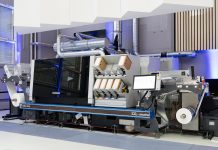Ways in which print service providers can leverage software to close the communication gap with their customers and generate new business opportunities.
The significance of effective customer communication has reached new heights, as customers now face an abundance of choices. This trend is evident across all product sectors, including the printing industry. While companies that directly market their services and products to end users have been experiencing the impact of this shift for a while, B2B companies are also feeling the effects and must reconsider their approach to customer communications.
Ultimately, fostering robust customer relationships results in enhanced loyalty, increased repurchase rates, and, ultimately, higher sales. The following effective strategies, shared by William Crabtree, President of Tampa Media, at drupa 2024, will assist you in bridging the communication gap and reinforcing your customer relationships.
1- Use targeted marketing
While it may seem conventional, a well-crafted marketing campaign remains essential for success. By employing a mix of online and offline marketing strategies—such as targeted keywords, geo-fencing, social media engagement, demographic targeting, direct mail, and out-of-home advertising—businesses can effectively reach potential customers. This approach not only enhances brand visibility but also positions the business as a viable supplier in the eyes of future customers.
2- Use clickfunnels
While visibility and traffic are crucial, they do not automatically translate into new business. One effective tool to enhance customer engagement is the use of clickfunnels. Rather than directing potential customers to a standard e-commerce site where they are met only with pricing information, clickfunnels guide them through a series of interactive questions. This approach not only engages customers but also piques their interest, encouraging them to provide their contact details. By facilitating this process, businesses can significantly increase the likelihood that customers will share their information and maintain ongoing communication with the company.
3- Interactive customer service through AI
Utilizing artificial intelligence (AI) can significantly enhance communication between companies and their customers. An interactive chatbot can efficiently address customer inquiries and assist them in locating the right products. Often, simply trained bots are sufficient; by crawling the company’s website, they can gather enough information to respond to most customer questions without requiring extensive training. This capability not only alleviates the workload for customer service agents but also ensures that customers receive the precise information and products they seek.
However, it is important to note that the effectiveness of AI improves with better training. A well-trained AI can provide more than just answers; it can actively guide customers in finding the ideal product or service tailored to their needs, including recommending relevant add-on services. This proactive approach not only enhances the customer experience but also drives greater satisfaction and loyalty.
4- Customisable software solutions
For printing and graphic design companies, employing flexible and customizable software solutions is essential. The software should be designed to adapt to the company's specific workflows rather than requiring the company to conform to predefined processes. This adaptability helps to minimize errors and optimize efficiency. Unfortunately, many software developers create workflows and processes that are tailored to the original use case of the software. When such software is applied in a different context, it often necessitates strict adherence to those established processes or leads to cumbersome and potentially error-prone workarounds. By prioritizing flexibility in software design, companies can enhance their operational efficiency and reduce the risk of mistakes.
5- Continuous improvement and innovation
Regardless of the measures companies choose to implement, it is essential not to adopt a one-time approach and then become complacent. Continuous improvement and innovation are vital for achieving long-term success. Businesses must consistently seek new ways to optimize their processes and enhance the services they offer to customers. By embracing emerging technologies and remaining adaptable to shifting market demands, companies can maintain their competitive edge and ensure sustained growth in an ever-evolving landscape.
Non-stop innovation
The printing industry is interconnected with broader market trends and technological advancements. As the technology for producing print products evolves rapidly, so too does the manner in which companies communicate with their customers and market their offerings. Many businesses have successfully seized new opportunities by selling directly to end customers, thereby expanding their market reach. Additionally, some have developed innovative products that leverage digitalization, creating entirely new business avenues.
However, amidst these changes, one fundamental aspect remains constant: potential customers must first be made aware of a company's existence. Effective marketing and communication strategies are essential to ensure visibility in a competitive landscape, allowing businesses to connect with their target audience and drive growth.
Effective customer communication is indeed fundamental to fostering successful business relationships. By implementing targeted marketing strategies, utilizing click funnels, integrating interactive AI solutions, and adopting customizable software, companies can bridge communication gaps and enhance customer satisfaction. The overarching recommendation is to remain innovative and receptive to new technologies. This commitment to continuous improvement not only strengthens customer relationships but also propels businesses to new heights in an increasingly competitive landscape. Embracing change and leveraging advancements will ensure that companies can adapt to evolving customer needs and preferences, ultimately driving long-term success.













